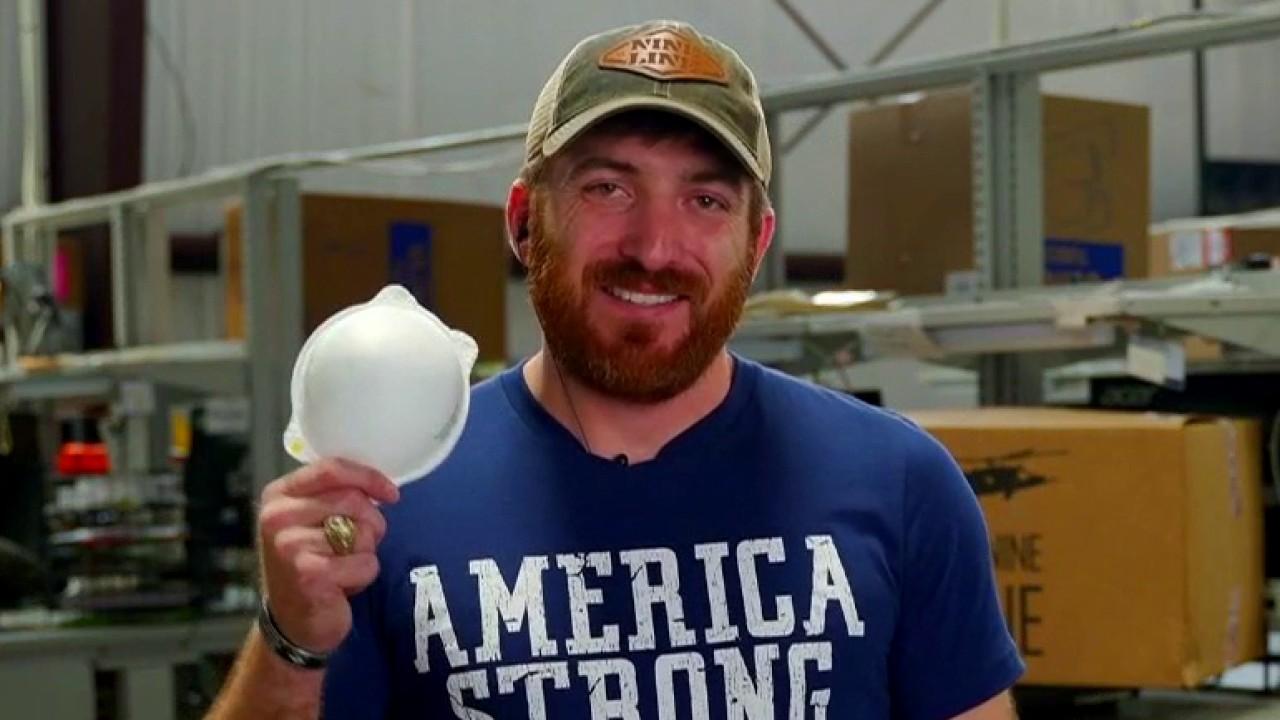How to make coronavirus face masks at home
CDC recommends Americans cover their face in public with scarves or other cloth covering
Personal protective equipment (PPE) supply in the U.S. is rapidly diminishing as demand in the health care sector amid coronavirus increases.
To ensure medical professionals are receiving required equipment, such as N95 face masks, Americans are being encouraged to find other means of protecting themselves and those around them. The CDC on Friday recommended all Americans start covering their faces in public, whether it be with a scarf or a homemade mask.
CORONAVIRUS HAND SANITIZER YOU CAN MAKE AT HOME -- AND IT'S DOCTOR-APPROVED
So if you're gearing up to protect yourself and others from coronavirus contraction, or want to make a donation to local health care facilities, here's how to make your own face masks at home.

iStock
What You'll Need
According to Good Housekeeping, the best fabric to use is tightly woven, 100% cotton fabrics. Some fabrics you could repurpose from home include denim, bedsheets and heavyweight shirts. Altogether, here's what you'll need.
- Tightly woven, 100% cotton fabric
- Nonwoven filter fabric to block out particles
- Elastic or binding tape
- Pins
- Wire fastener (paper clip, twist tie, etc.)
- Measuring tape
- Scissors
- Iron
- Sewing machine
GET FOX BUSINESS ON THE GO BY CLICKING HERE
"Project Runway" alumna Amanda Perna, in partnership with Good Housekeeping, shared her step-by-step instructions to making medical-grade face masks at home. Perna also offers a printable pattern to use as a guide.
Step by Step
- Print pattern, if necessary
- Cut out two, 9x8-inch rectangles with 1-inch pleats from your fabric
- Cut out two 9x8-inch rectangles from the nonwoven fabric
- Place cut fabric together with front sides facing each other; place nonwoven fabric on top
- Sew 9-inch seam at top with 1/4-inch seam allowance, at about a 2.5-stitch length
- Flip open fabric with front sides facing out and iron seam flat
- Flip to back sides of fabric and insert wire fastener inside seam
- Fold fabric along seam; stitch 1/2-inch rectangle around fastener to secure in place (follow pattern, if necessary)
- Place front sides of fabric together with nonwoven fabric on top
- Stitch 9-inch seam on opposite end with 1/4-inch allowance
- Flip mask right side out and press bottom seam flat
- On the sides of your mask, place three pins a 1/2-inch apart to mark pleats
- Pleat fabric in the same direction and secure with pins; press pleats to keep tight
- Cut binding tape or elastic at 36 inches per side
- Match up center point of binding/elastic with center edge of mask and pin
- Sew from end of binding/elastic through mask to the other end
- Repeat on other side
- Wear or donate to local health care professionals
CLICK HERE TO READ MORE ON FOX BUSINESS
Before donating masks to local hospitals, make sure they will accept the kind of mask you've made. If your medical centers don't accept them, health care individuals via social media have been making requests for donations, according to Good Housekeeping. Organizations like Masks for Heroes is keeping track of which medical centers worldwide are accepting donations and are in need of supplies.





















